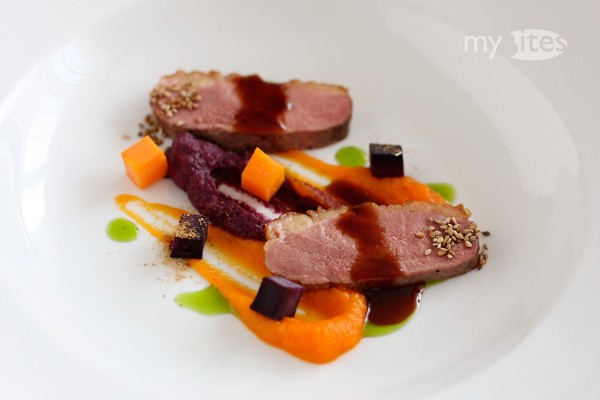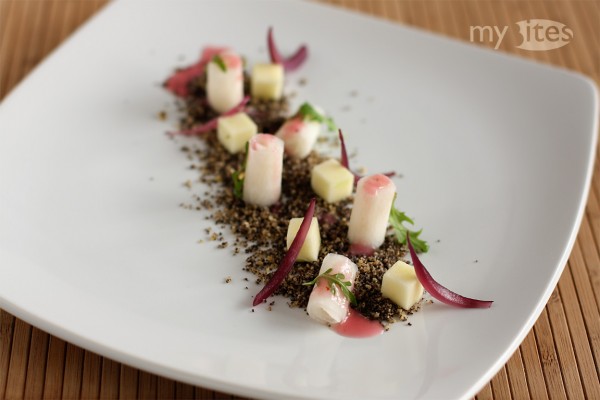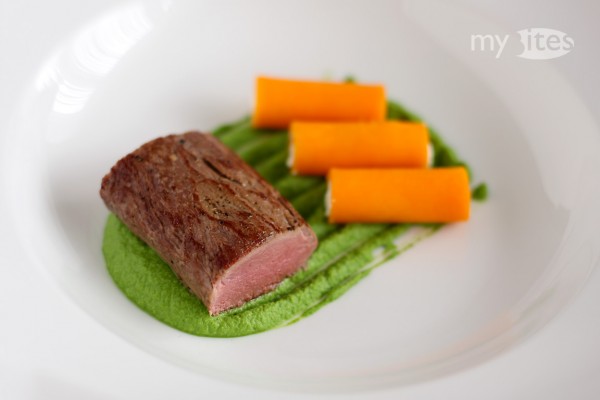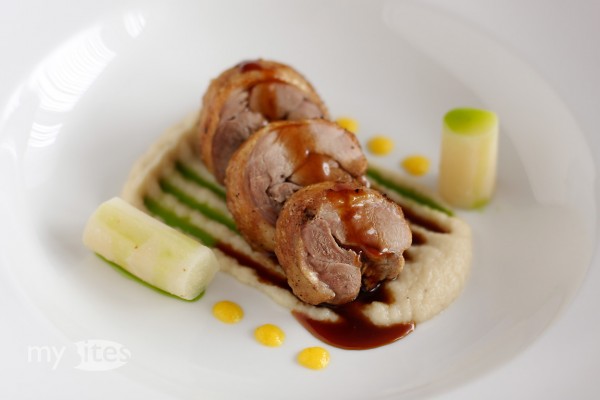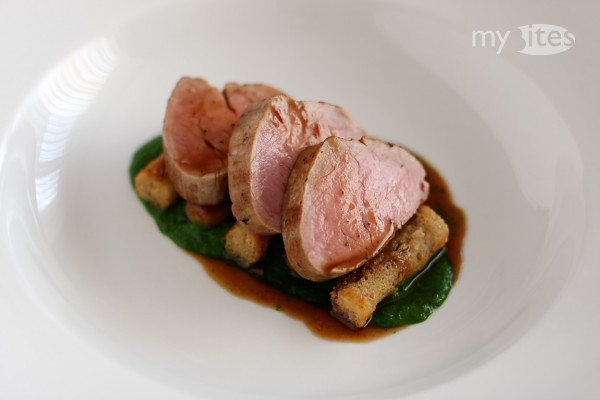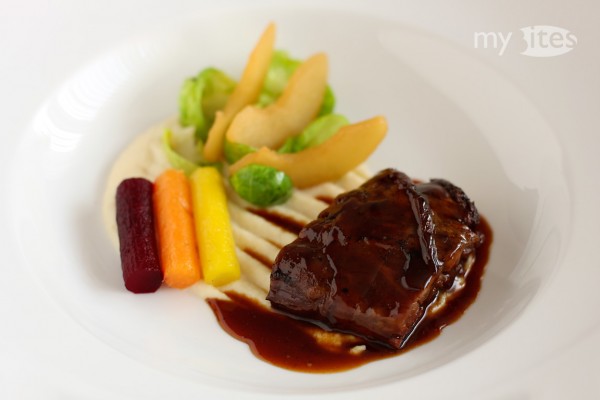Winter is passing by slowly and spring gets in its place. This is a very interesting time of the year, not only because of the awakening of the nature, but also from a culinary point of view. At this time of year, both winter-stored and fresh spring versions of the same ingredients can be found at local markets. While the winter vegetables usually require a lot more cooking time, spring vegetables tend to get soft within minutes. In this dish I combined the last purple carrots from winter with the first orange ones of spring.
Tag Archives: sauce
Camomile Turnip on Poppy Seed Soil
In my previous post I gave a short review of the renewed Foodpairing website. In a short tutorial I went through all options of the Foodpairing Explorer and simultaneously created a combination of ingredients featuring poppy seeds, banana, turnip, apple and camomile. First this combination might sound a little bit weird, but if you take a closer look, they actually make sense together. Poppy seeds aren’t very sweet but slightly bitter on their own. Banana used as chips are less flavorful and less sweet compared to the raw fresh fruit and it contributes a nice crunchy texture too. Apples can be tart, turnips are actually very sweet and while they are both crisp, their consistencies differ. So to sum up, every main flavor and many different textures are present in the aforementioned combination, which is the foundation of creating an interesting vegan dish based on them.
Venison Sirloin with Macadamia-Kale Puree
Kale is definitely one of my favorite ingredients this winter. I usually buy one large or two smaller plants on Saturdays at the market and cook them quite often Asian style once or twice a weak. Because a kale plant is huge, it’s impossible to keep it in the refrigerator. Fortunately, in winter I can store it in a bag on my balcony, because cold and frosty nights are no problem for kale. Actually, temperatures below 0°C makes kale taste less bitter and more sweet. That is also a reason why it is such a great winter vegetable.
Duck Leg with Salsify, Mandarin, Basil and Quince
Last year in spring I tried a new technique for cooking chicken legs. I carefully removed the bones, rolled the meat up and fixed it with kitchen twine. Then I roasted the chicken roll on all sides and baked the leg in the oven. The result turned out really great, so now in winter I gave the same technique a try using duck legs.
Kale with Oat Dumplings, Shallots and Pork Tenderloin
In the northern part of Germany “Grünkohl mit Pinkel” is a traditional winter dish. It is basically a combination of kale (in German “Grünkohl”), oatmeal, onion and a smoked pork sausage made with oatmeal called “Pinkel”. You can find this dish at almost every winter festival like christmas markets, where it is prepared continuously in huge steaming pans. The main advantages of this dish are, that it is made completely from local produce, it is very simple to prepare, scales well and reheating is no problem either. It is also very stodgy and warms well on cold winter days. I thought that this traditional dish could be easily transformed into a more elaborate version by rethinking some of the main components and by restructuring the dish. Below you see my result.
Braised Lamb Knuckle with Quince Sauce and Autumn Vegetables
Winter is the season of braised meat. The secret of braising is pretty simple: use the cheap cuts with a lot of connective tissue and do not trim anything off of them. So ask your butcher please not to trim off anything at all. You can still cut it off on your plate, but if you braise meat long enough, the connective tissue will just disappear. Meat cooks a lot faster than the connective tissues, but if you braise your meat at low temperature for a long long time, the connective tissues are going to melt into the meat and turn the meat moist and soft. That is also the secret of all braised dishes and why they need so much time. I like to prepare them overnight in the oven. This way I don’t have to worry about any burnt parts and if I wake up during the night, I turn the meat around and go back to sleep. And I wake up in the morning with a wonderful scent of braised meat all over my flat.
